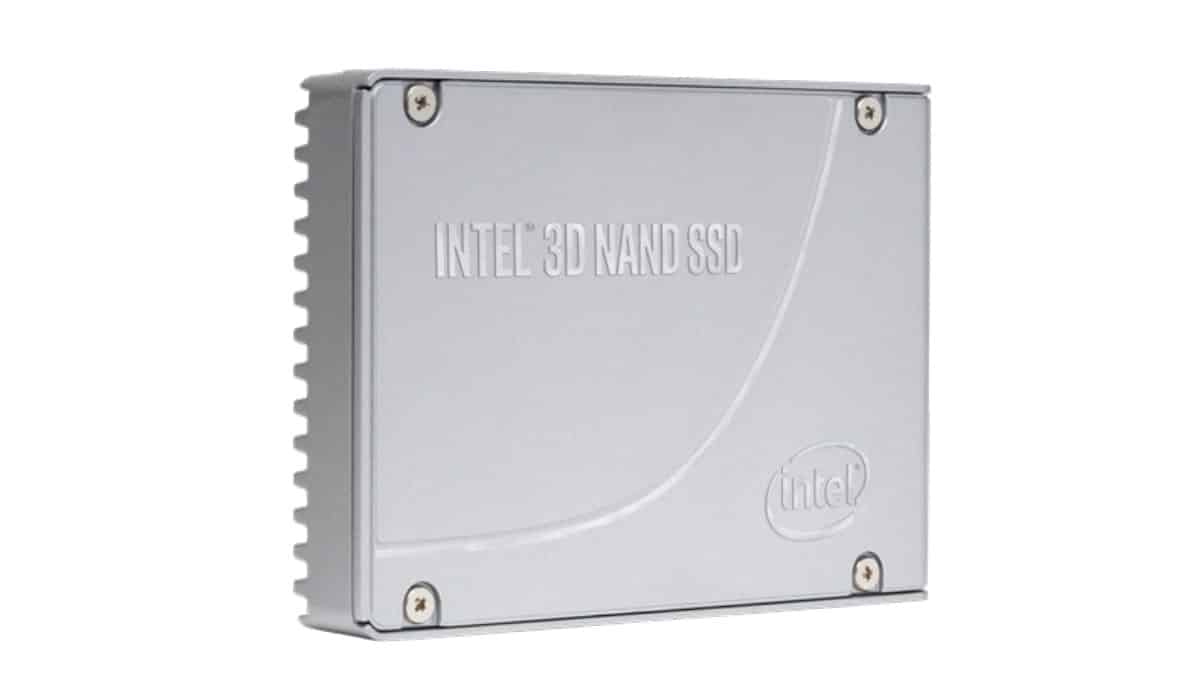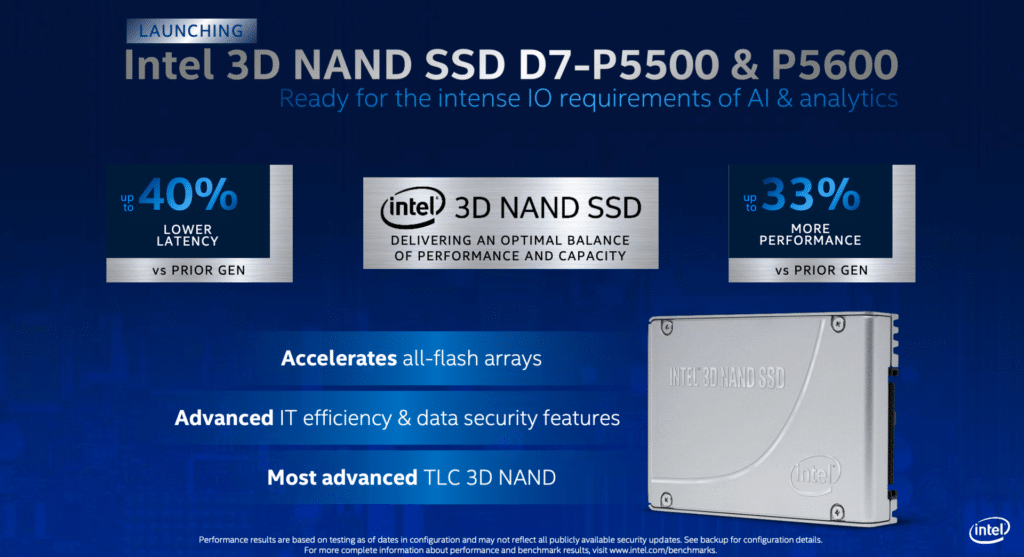Intel has announced the availability of the D7-P5500 and P5600, two new 3D NAND SSDs designed for systems that store data in all-flash arrays. These two new 3D NAND SSDs are built with Intel’s latest TLC 3D NAND technology and are highlighted by the company’s brand new, low-latency PCIe controller, making these drives ideal for systems that deal with intense IO requirements of AI and analytics workloads. They also feature advanced IT efficiency, management and data security features for Cloud environments.

Compared to previous-gen Intel drives, the company indicates the D7-P5500 boasts double the maximum sequential performance, while the D7-P5600 will show a 44% increase in random mixed-workload performance. Both drives are quoted to deliver up to 80% improvement in 4KB Random Read Quality of Service (QoS) for 99.99999% of transactions.
Intel also indicates a range of firmware enhancements to improve IT efficiency and data security:
- Dynamic namespace management delivers the flexibility to enable more users and scale deployment.
- Additional security features like TCG Opal 2.0 and a built-in AES-XTS 256-bit encryption engine, which are required by some secure platforms.
- Enhanced SMART monitoring, which reports drive health status without disrupting I/O data flow using an in-band mechanism and out-of-band access.
- Telemetry 2.0 makes a wide range of stored data accessible and includes intelligent error tracking and logging. This increases the reliability of finding and mitigating issues and supports accelerated qualification cycles — all of which can result in increased IT efficiency.
- Optimized TRIM architecture now runs as a background process without interference to workloads, improving performance and QoS during concurrent TRIMs. The TRIM process is improved for high-density drives, with reduced write amplification that helps drives meet their endurance goal.
Intel SSD D7-P5500 and D7-P5600 Specifications
| Model | Intel SSD D7-P5500 | Intel SSD D7-P5600 |
| Capacity and Form Factor | U.2 15mm: 1.92 TB, 3.84 TB, 7.68 TB | U.2 15mm: 1.6 TB, 3.2 TB, 6.4 TB |
| Interface | PCIe 4.0 x4, NVMe 1.3c | PCIe 4.0 x4, NVMe 1.3c |
| Media | Intel® 3D NAND Technology, 96-layer, TLC | Intel® 3D NAND Technology, 96-layer, TLC |
| Performance | 128K Sequential R/W up to 7,000/4,300 MB/s | 128K Sequential R/W up to 7,000/4,300 MB/s |
| Random 4KB R/W up to 1M/130K IOPS | Random 4KB R/W up to 1M/260K IOPS | |
| Endurance | 1 DWPD (up to 14 PBW) | 3 DWPD (up to 35 PBW) |
| Reliability | UBER: 1 sector per 1017 bits read MTBF: 2 million hours | UBER: 1 sector per 1017 bits read MTBF: 2 million hours |
| Power | Max Avg. Active Write: 20W Idle: 5W | Max Avg. Active Write: 20W Idle: 5W |
| Warranty | 5-year limited warranty | 5-year limited warranty |
Available in the U.2 15mm form factor, the D7-P5500 and P5600 SSDs comes in capacities of 1.92TB, 3.84TB, and 7.68TB at 1 DWPD and 1.6TB, 3.2TB, and 6.4TB at 3 DWPD, respectively.





 Amazon
Amazon